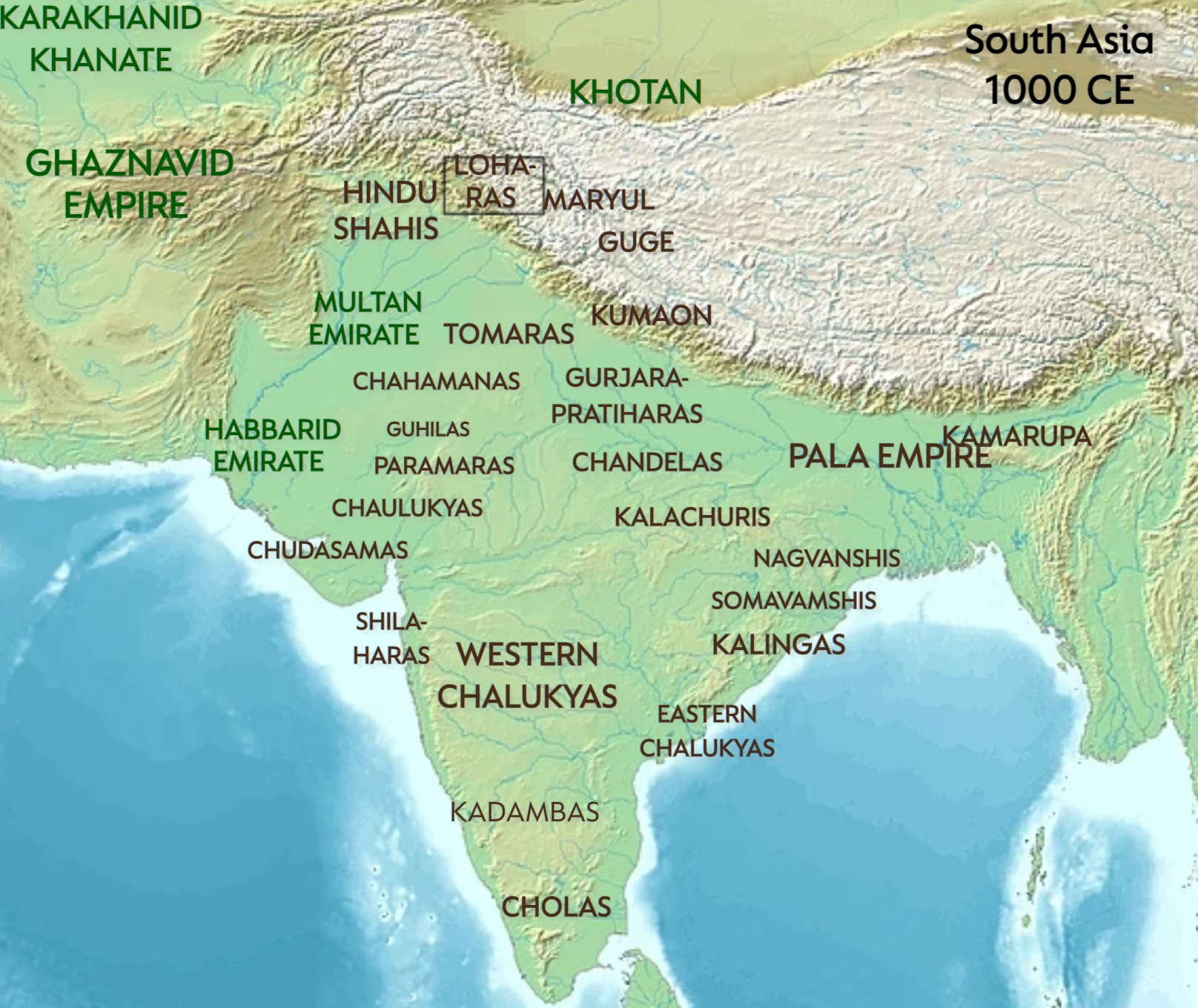Lohara Dynasty- Origin, Queen Didda, Expansion and Decline
Lohara Dynasty
The Lohara dynasty lasted from 1003 to 1320 A.D. and represented an important chapter in the historical narrative of Kashmir. Kalhan‘s Rajataringini (Chronicle of Kings), a mid-12th-century work, mentions the Lohara dynasty. After the Utpala dynasty, Lohara Dynasty played an important role in shaping the social, political, and cultural conditions of the region.
Lohara Dynasty family belonged to the Khasa tribe, originally ruling from a hill fortress named Loharakotta in the Pir Panjal ranges in the Poonch area.

Origin and Expansion of Lohara Dynasty
The Lohara Dynasty’s story starts after the Utpala dynasty’s end. By an unexpected turn of events, a clever clerk named Paravgupta beame the king and started a new chapter for his family’s rule. His son, Kshemagupta, made their position stronger by marrying princess Didda. Despite the talks about her morals, Didda was a significant figure, marking the start of a period rich in art and craftsmanship in Kashmir.
Didda – Architect of the Empire
Queen Didda, who became the queen in 980AD, is often called as the real founder of the Lohara dynasty. Didda was the daughter of the Lohara king Simharaja. She was married to king Kshemgupta of Kashmir. After the death of Kshemgupta, she served as a Regent and was the de facto ruler of Kashmir.
Her reign was marked by clever ruling and forward-looking policies that ensured stability and prosperity for the country. Didda knew how to make smart alliances and lead well, setting a strong base for the rulers who came after her.
Sangrama Raja and the next Rulers
In 1003 AD, Didda’s nephew, Sangrama Raja, became the king. He followed in his aunt’s footsteps with strong leadership. He stood up against attacks from outsiders, especially Mahmud of Ghazni, and helped Hindu kingdoms around. The dynasty had many good rulers like Ananta Deva and Kalasha, who faced many challenges but also had successes.
Decline of the Lohara Dynasty
The dynasty faced big troubles during King Harsha’s time because of fights inside the kingdom and a civil war. These problems led to the dynasty getting weaker. Harsha started well but then became corrupt and unfair, which hurt the dynasty a lot.
Even with these problems, the Lohara dynasty did a lot for Kashmir, especially in art and building. This time saw the making of many Hindu temples out of wood and the unique style of religious buildings, like the Markula Devi shrine.
Conclusion
The time when Lohara dynasty ruled over Kashmir was full of ups and downs. But the contribution of Lohara dynasty to kashmir’s heritage set the stage for future developments and continued to inspire subsequent generations. The Lohara dynasty with its complex legacy of governance, resistance, and cultural patronage, remains a fascinating study for historians and enthusiasts alike, offering insights into the enduring spirit of Kashmir through the ages.







